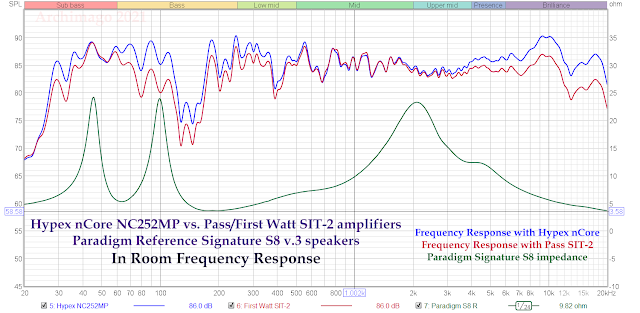A fantastic reminder that speakers are not resistive loads and amplifiers will behave differently with reactive loads connected to them.
It is amazing that a site so enamored with 'science' continues to ignore the resistive vs reactive load debate. And hasn't ever done any matched level in-room response measurements like this. Science is great but if you only look for the data you want, you are much more likely to get the results that you want rather than the truth.
But then again we still get Amir's subjective impression of the speakers without any double blind comparison after he has tested them to know what to listen for. Which is exactly the same as a salesman telling someone what speakers will sound like before doing a demonstration and the person hearing what they were told they would hear.


